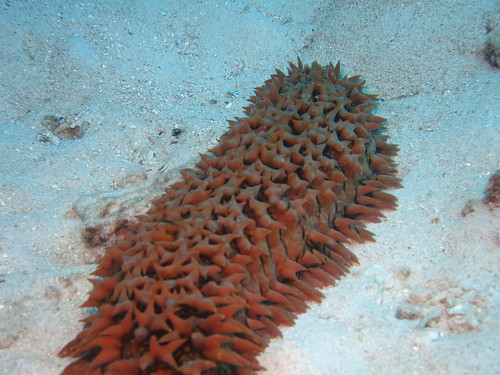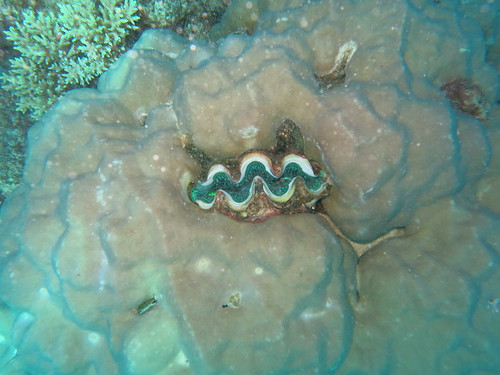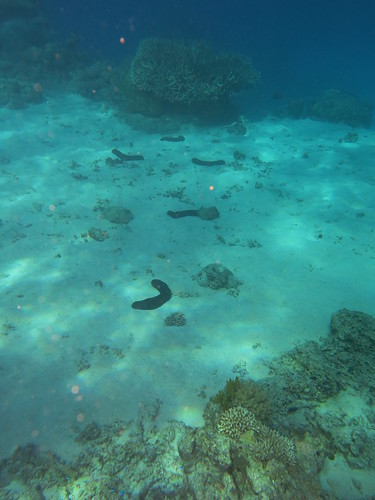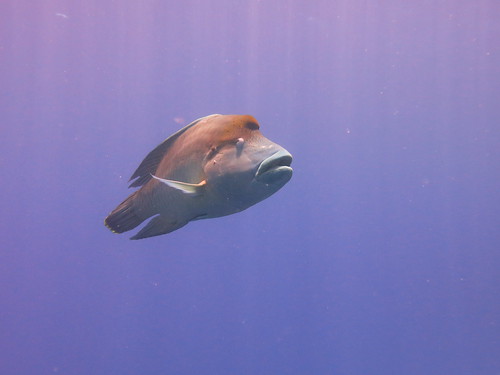Swimming through the sea: Adventures at the Great Barrier Reef
Nothing, I think, hurts much more than extremely cold water. It is like a thousand little knives hitting your body. And then there’s the bone-aching cold that numbs your body and makes it hurt to move. You do not want to swim in extremely cold water, unless you have a dry suit. Fortunately we were going scuba diving in Northern Australia - in Cairns. After a boat ride of an hour and a half, we reached the Great Barrier Reef, the biggest reef on the planet. The water there was not cold, but it was not bathwater, like it was in Thailand. (Let me tell you something, if after sitting in the heat in Thailand (100-115 degrees), you want a really cold something to get into. A pool, ocean, rain, anything wet. So you get up and walk down two miles to the sea to cool off, and guess what? It is as warm as the air is and you find yourself SWEATING! In the water that you were counting on to cool you off! Well, not refreshing.) But the water on the Great Barrier Reef out from Cairns was the most refreshing water I had been in for a long time.
With temperatures of 90-105 degrees, we sat under what shade we could find on our liveaboard, surrounded by sixteen people also trying to escape the blinding sun. (A liveaboard is where people go on a boat to a place and stay there for a day or more and go swimming and scuba diving and snorkeling. Sort of like a cruise, but different.) It was our second day at sea and I almost had my sea legs.
About sea legs - most people think that when people talk about going back and forth along a boat, sliding and stumbling around while trying to move is difficult, but it is not! Think about the ground, ok? Ready? Now think that it is moving ten degrees (or so) up at one side, and down on the other. Now figure in that the boat is dropping out from under you now and then as it dips down between the waves. Then there is a hard wind and now you are called from the other end of the boat. Your legs are used to walking on solid ground, where the earth stays steady. But when you want to get to the other end of the boat, start to walk across the deck and you go from one side of the boat to the other. The only way you can try to not look like you do not have your sea legs is by looking over the side each time you reach the side and pretending to look at the fish. That does not always work… sea legs are annoying and explaining them is even more annoying, but bear with me and I will try my best. When you are on the sea, or in a river, or anywhere with a population of waves, then you get what is called sea legs. The waves that you can see on the surface are not what cause those, because your body automatically sees them coming and brace, those are the ones that throw you around the boat sharply. There are waves called swells and those are what cause sea legs, because your eyes can’t see them and so you don’t know they are coming. They lift the ship more than the small ones do because they are under the surface, so they get under the boat easier. Then the boat moves under you and you try to continue in your original direction, which brings you to the other side of the boat, which is rising up to meet you and then you continue walking, and the swell drops away on one side and begins again on the other, and soon you are on the other side.
Finally the time came for the dive. It was not long before I was suited up and ready to take the plunge into the clear, blue, clean water. I sunk beneath the surface with my family above me, also dropping down steadily. Down, down, down, thunk. I hit the sandy bottom with the tips of my fins, inflated my BCD (Buoyancy Control Device) and hovered in the slight current, waiting for my family to descend. Ezra and Dad leveled out at twelve meters – that being Ezra's deepest allowed depth for his age (he is a junior diver). The rest of my fmaily are open-water divers. Mom, Hannah, and Elisha all came down to me, at eighteen meters, and we all made sure we were ok. And then we were off.

The Pineapple sea cucumber has a scientific name, as do all of these fish and animals in here, but I do not know them. This sea cucumber is a really sturdy animal and the sea floor is littered with them. They suck all the bad stuff off the rocks and eat it.

Cone shells are marine snails and are found in reef environments throughout the world. They prey upon other marine organisms, immobilizing them with unique venom. There have been 30 recorded cases of human envenomation by fish eating cone shells, in some cases fatal. They hurt the people the same way they kill the fish, with their little harpoon like stinger. Upon investigation it was found that toxins in cone shell venom possess pharmacological qualities that make them valuable tools in medical research. Upon contact, it takes about two seconds for the fish to die.

These clams are beautiful creatures. They have little algae that sit in them and produce more and more little algae. The algae gives the clam food, and that is what the color is!

Sea Cucumbers. These are, to my knowledge, harmless. There are so many of them that I can’t count them all when diving above them!

This is Hannah’s photo. Isn’t it just beautiful?

Creepy eyed fish. This little, well, big fish we found hanging out under a coral. Fortunately I had the camera at that time, so I was able to get a good photo. Isn’t his eye creepy?!

Wrasse fish. Ok, this has got to be my favorite fish. These fish get HUGE! The males have a hump on their forehead, like you can see here, and when you hold out your hands and wiggle your fingers they come right up to you and put their mouth on your hand! What they want you to do is to scratch their mouths. It is really funny because they put their eyes up into the back of their head and I can almost imagine them smiling!
Well, those are the best photos I took. My dad took better ones and you can find those through this link. I do not think I have been swimming on a better reef, although the one in Belize right off the mainland, where Tobacco key is placed, is really close!
Gabriel Miller is a member of the Youth Travel Blogging Mentorship Program
All photos courtesy and copyright Gabriel and Hannah Miller
Note: this article was originally published in 2013, and updated in 2017

















